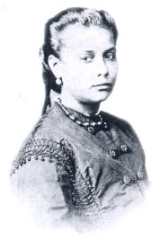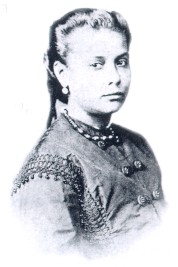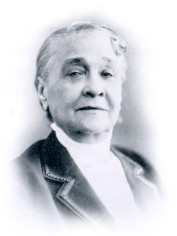
Chiquinha Gonzaga
Encyclopedia


Francisca Edwiges Neves Gonzaga (October 17, 1847 Rio de Janeiro
Rio de Janeiro
Rio de Janeiro , commonly referred to simply as Rio, is the capital city of the State of Rio de Janeiro, the second largest city of Brazil, and the third largest metropolitan area and agglomeration in South America, boasting approximately 6.3 million people within the city proper, making it the 6th...
- February 28, 1935 Rio de Janeiro
Rio de Janeiro
Rio de Janeiro , commonly referred to simply as Rio, is the capital city of the State of Rio de Janeiro, the second largest city of Brazil, and the third largest metropolitan area and agglomeration in South America, boasting approximately 6.3 million people within the city proper, making it the 6th...
) was a Brazilian composer, pianist and conductor.
Chiquinha Gonzaga was born in Rio de Janeiro, from a mulatto
Mulatto
Mulatto denotes a person with one white parent and one black parent, or more broadly, a person of mixed black and white ancestry. Contemporary usage of the term varies greatly, and the broader sense of the term makes its application rather subjective, as not all people of mixed white and black...
mother and a wealthy white
White Brazilian
White Brazilians make up 48.4% of Brazil's population, or around 92 million people, according to the IBGE's 2008 PNAD . Whites are present in the entire territory of Brazil, although the main concentrations are found in the South and Southeastern parts of the country...
father – after she was born her father became a marshal
Marshal
Marshal , is a word used in several official titles of various branches of society. The word is an ancient loan word from Old French, cf...
. Her godfather was the duke of Caxias
Luís Alves de Lima e Silva
Luís Alves de Lima e Silva, Duke of Caxias , nicknamed "the Peacemaker" and "Iron Duke", was an army officer, politician and monarchist of the Empire of Brazil. Caxias pursued a military career, as had his father and many relatives before him. In 1823, he fought as a young officer during most of...
and one of her best friends was the first lady of Brazil, Nair de Tefé
Nair de Tefé
Nair de Tefé von Hoonholtz, also known as Nair de Tefé, was Brazil's first female cartoonist, as well as a painter, singer and pianist....
.
She fought for the end of slavery
Slavery
Slavery is a system under which people are treated as property to be bought and sold, and are forced to work. Slaves can be held against their will from the time of their capture, purchase or birth, and deprived of the right to leave, to refuse to work, or to demand compensation...
in Brazil. Gonzaga received an education that would ordinarily have led her to be a “sinhazinha”, a respectful officer's daughter. She learned how to read, write, and do math, but also music, especially how to play the piano, a distinctive mark of a real lady.
In 1863, at age 16, Francisca married Jacinto do Amaral, a navy official, 8 years older than she was, who would not agree to allow Chiquinha to pursue a musical career. With the marriage not doing well, Chiquinha, after having her third baby, fled her husband and was “declared dead and of unpronounceable name” by her father. She became the first woman in Brazil to obtain a legal divorce.
Chiquinha began to participate in balls and “chorões
Choro
Choro , traditionally called chorinho , is a Brazilian popular music instrumental style. Its origins are in 19th century Rio de Janeiro. In spite of the name, the style often has a fast and happy rhythm, characterized by virtuosity, improvisation, subtile modulations and full of syncopation and...
” reunions, normally reserved for men, where she met the flautist Joaquim Callado and started to play in his group, O Choro do Calado, being the first woman to play in this group. During this time she composed her first success, the polka Atraente, in 1877, “composed by the piano, as an improvisation, during a ‘choro’ meeting” . At that time, she was famous but highly criticized by the masculine society of her time.
Chiquinha was an active citizen, involved in all kinds of social movements that took place during her age in Brazil, such as the Abolition of Slavery and even the Republican movement.
Chiquinha is most known for her works for the Carnival in Brazil, such as Ó Abre Alas, and theatrical works, as for example, the operettas Forrobodó and "Jurití".
External links
- Chiquinha Gonzaga - Site Official Biography, works and photos, in Portuguese
- Score.ePartitura small Brazilian website with digitalized scores (PDF). (Portuguese)
Further reading
- Mei, Giancarlo. Canto Latino: Origine, Evoluzione e Protagonisti della Musica Popolare del Brasile. 2004. Stampa Alternativa-Nuovi Equilibri. Preface by Sergio Bardotti and postface by Milton Nascimento.

